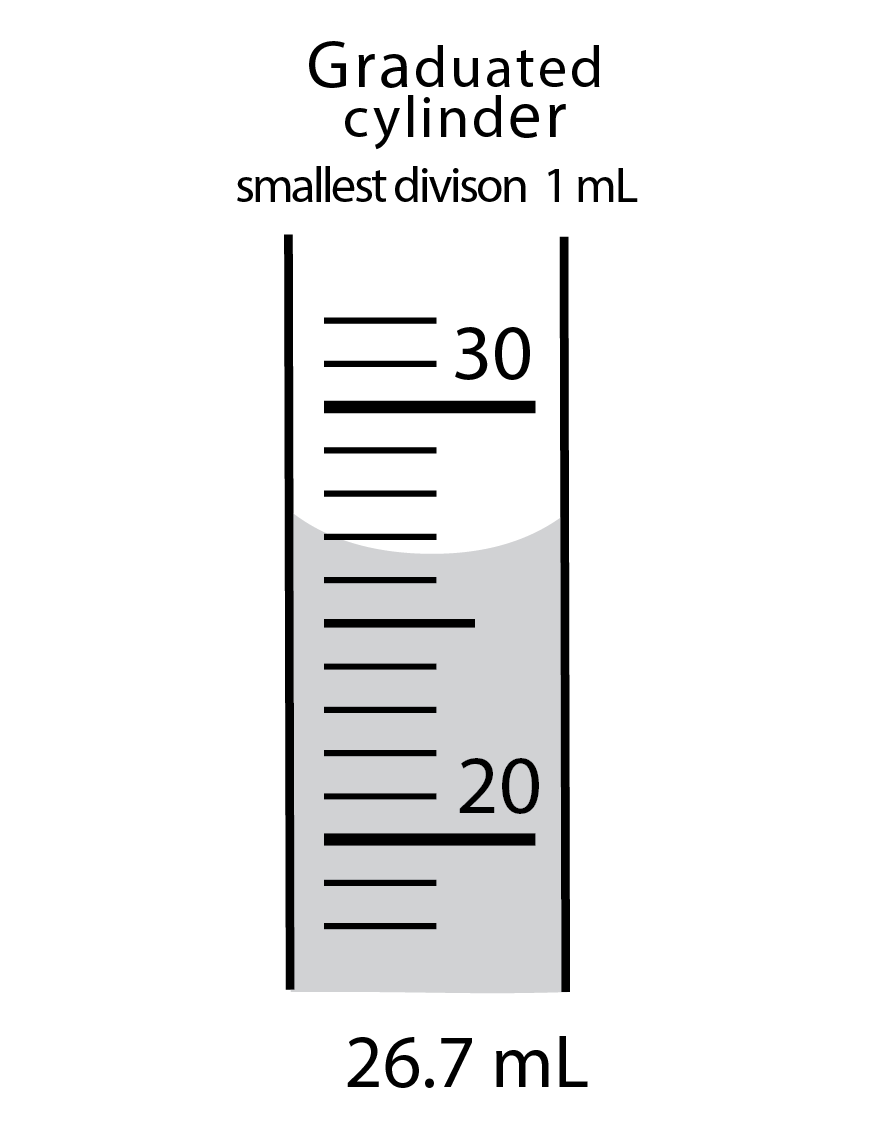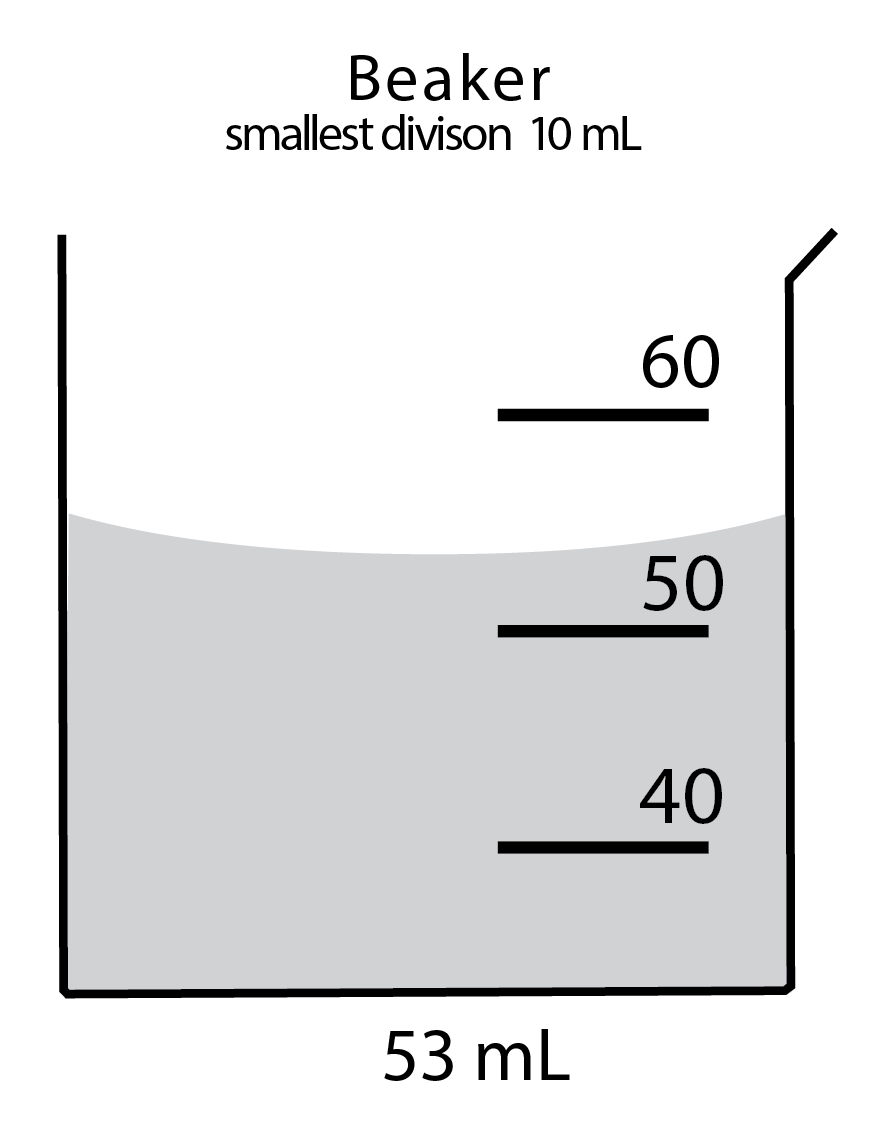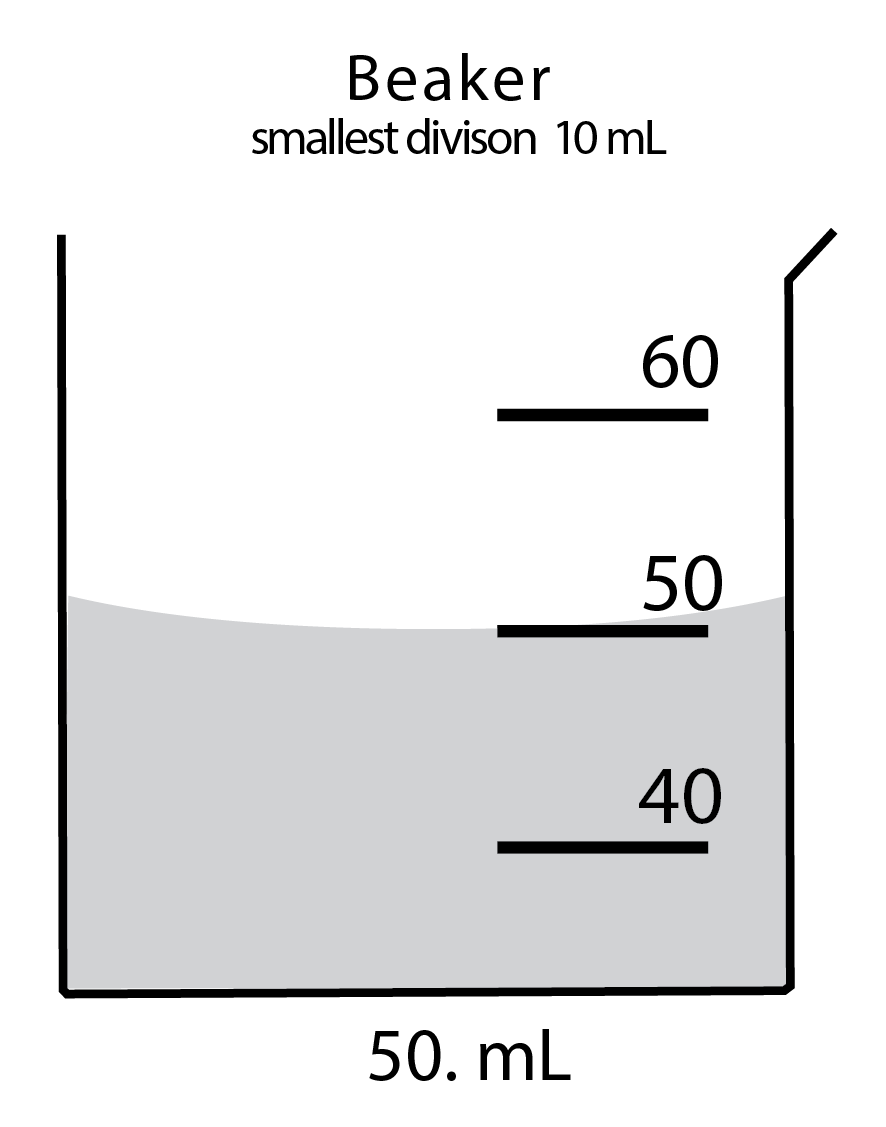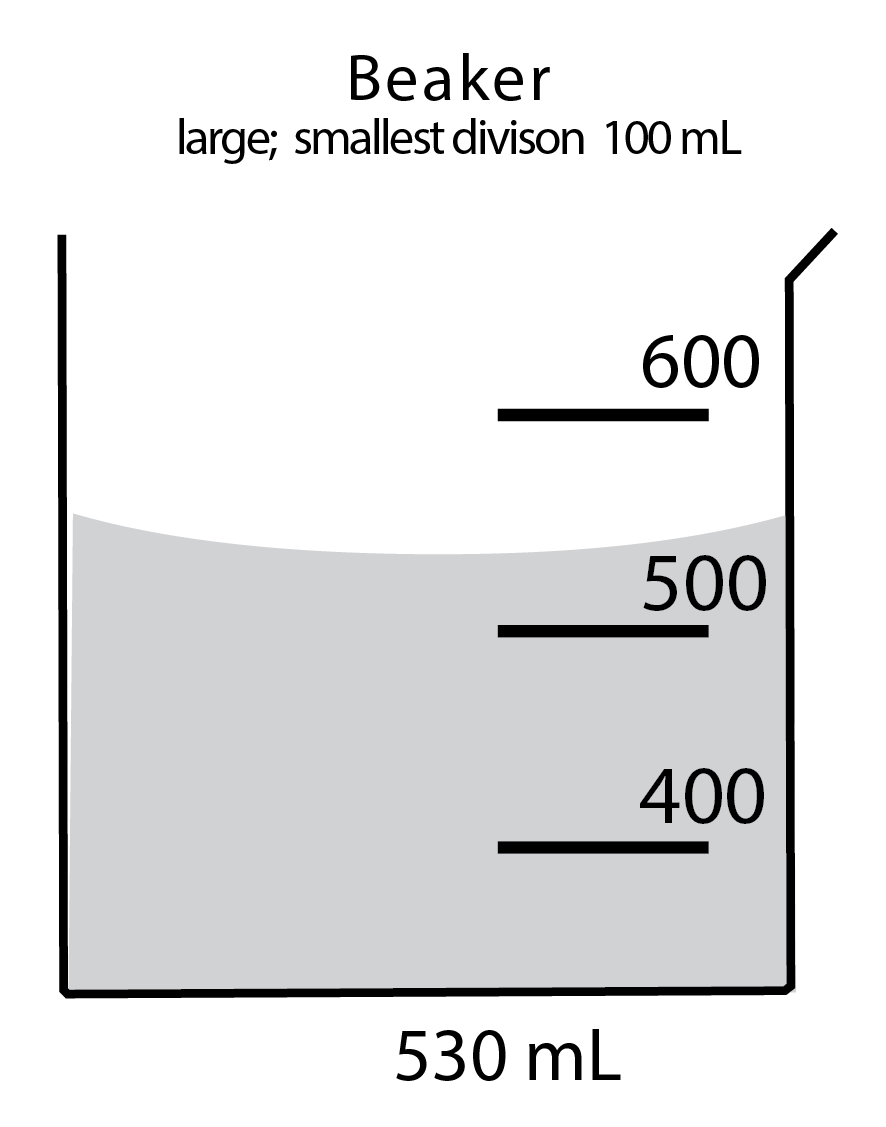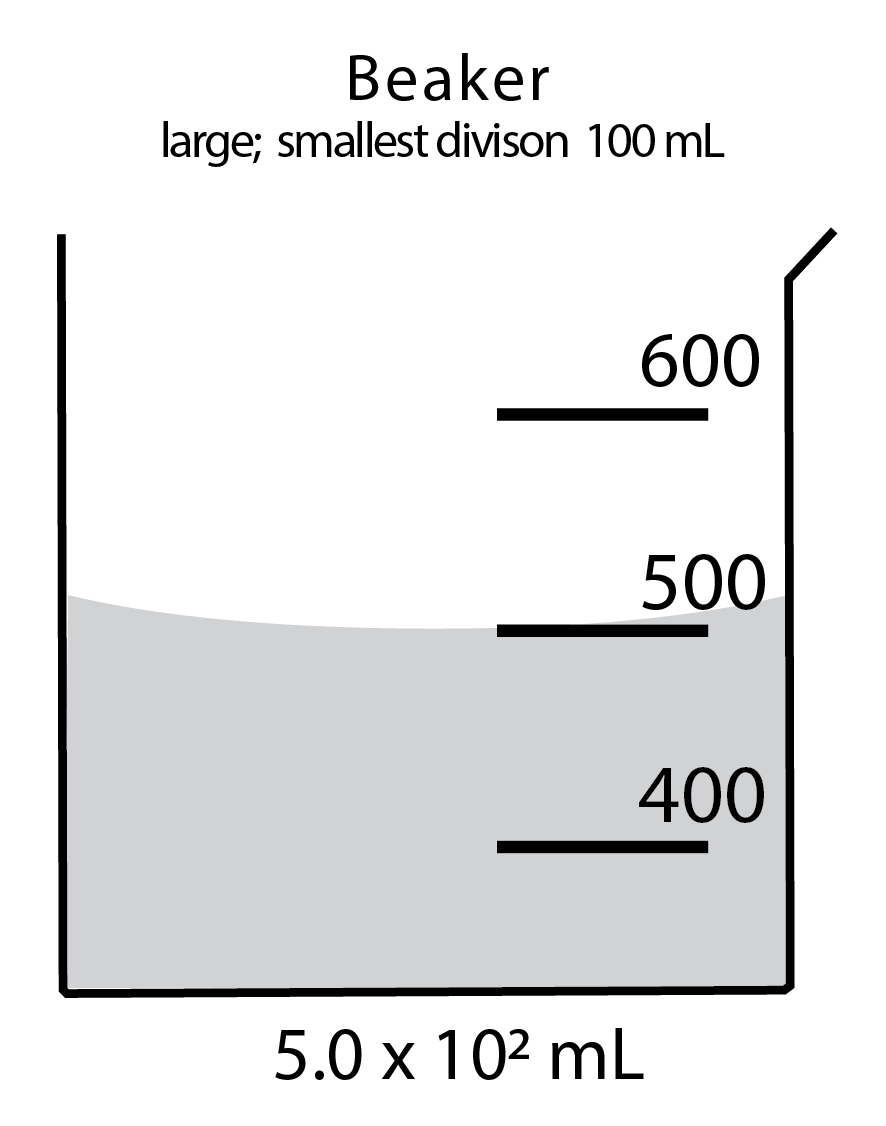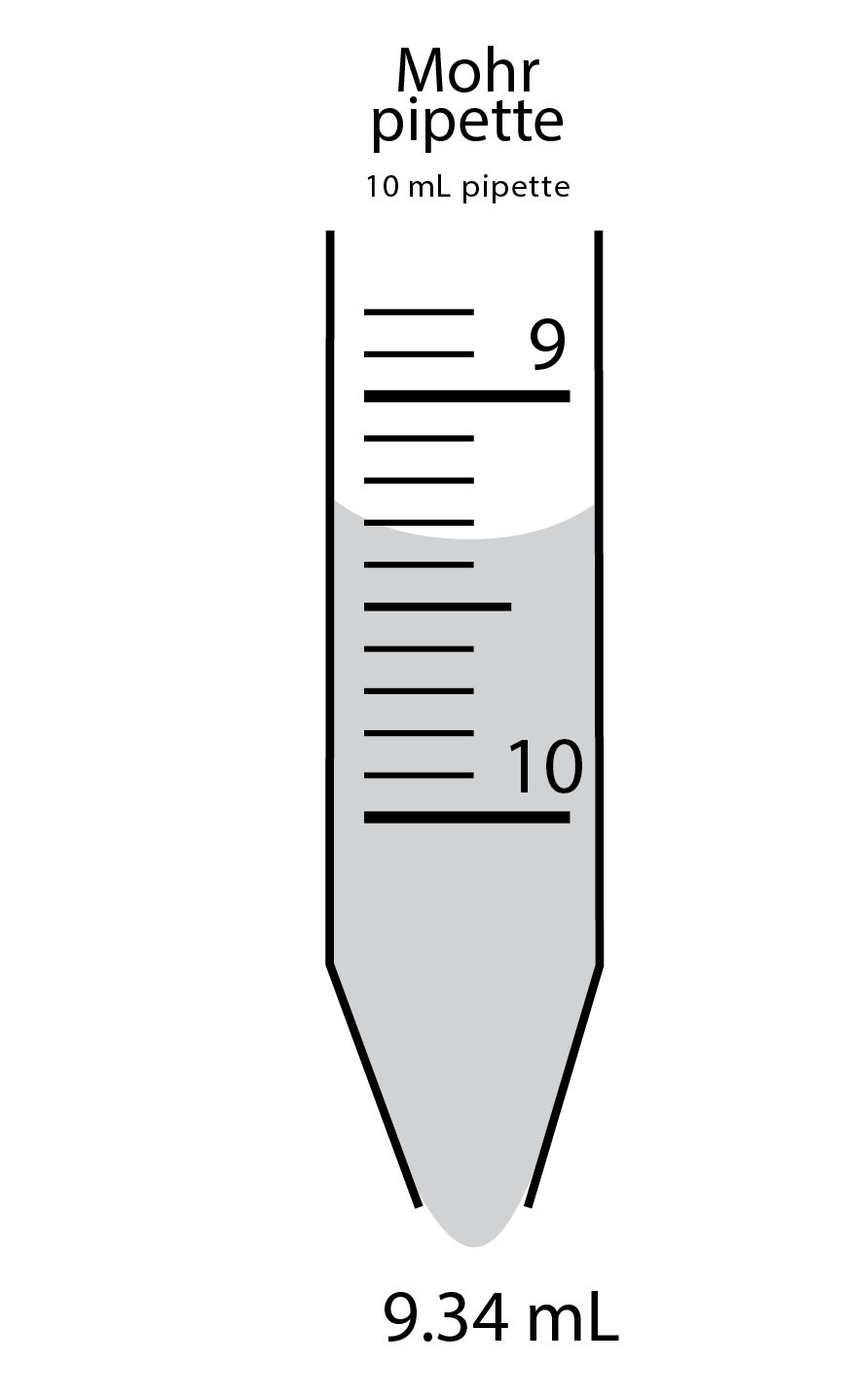Lab Measurements
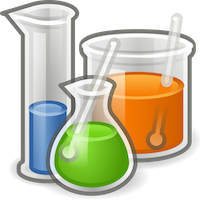
Sig Figs in the Lab
This blog details how to report measurements to the correct number of Sig Figs. It encorporates most, if not all, of the equipment you will use in this course.
Page Index:
- Basic Principles
- Measurements Made with Specific Equipment and Labware
- Example glassware measurements
Basic Principles
- There are two issues related to Significant Figures/Places:
(i) properly recording your data after a physical observation of your equipment, and
(ii) working with (i.e., adding, subtracting, multiplying, dividing) the numbers after your measurements have been recorded. This FAQ only deals with the former — videos are available on DrStephensonChemistry YouTube channel which deal extensively with the latter. - Digital Equipment:
- measurements from digital equipment should include all digits shown, even if the right-most digits are zero. For example, consider a balance which reports to the 3rd decimal place, and the digits are shown 12.230. The correct measurement (what you should actually write on your data sheet) is 12.230 g. Any other variation — such at 12.23 g — is incorrect.
- This is true of all digital equipment. Each measurement should have a digit which corresponds to each place to which the equipment reports.
- The most commonly used digital equipment includes digital balances and digital thermometers.
- Glassware and "Manual" Equipment:
- This section refers to equipment for which a measurement is not displayed, but for which the observer must determine what the correct measurement digits should be. Consider a graduated cylinder in which the liquid level (as read across the meniscus) appears half way between the 13 mL and 14 mL marks: how should it be recorded? — as 13.5 mL, 13.50 mL, or 13.500 mL? Only one is correct; and the answer depends on the markings provided on the graduated cylinder.
- This is true of all glassware and equipment for which digital readouts are not provided. The observer must record measurements according to the equipment used.
- The generic rule is: "The observer should report a measurement one place to the right of place which corresponds to the smallest graduation mark."
Example 1: A graduated cylinder has graduations which are 1 mL apart (i.e., "the cylinder marks are counting by 1's") — any measurement using that equipment should be reported to the 1st decimal place.
Example 2: A 100 mL beaker has graduation marks which occur every 10 mL, although only every other mark is labeled. Because the beaker "counts by 10's" (or put another way, "counts in the 10's place"), the last significant figure must be in the 1's place. No more digits, and no fewer. - The most commonly used glassware and "manual" equipment includes beakers, graduated cylinders, rulers. Measurements read from graph paper follow the same ruie.
Here is a good 3rd party video which does a good job of explaining the illustrating how to make a measurements from glassware observations. The principal applies to non-digital equipment in general (beakers, pipets, rulers, ect.), and so is well worth knowing.
→ VIDEO: How to Record the Number of Significant Figures in a Measurement with Lab Equipment
Required Sig Figs for Equipment/Labware Measurements
Below are guidelines for reporting measurements to the correct level of precision for some of the more commonly used glassware in this lab.
Disclaimer: IF the equipment you use/observe has different graduations than the typical ones described below, you are responsible to record according to the actual glassware used/observed.
- Measurement must have a digit which corresponds to each place to which the equipment reports.
— For example, the measurement made with a balance which reports to the 4th decimal place should have a digit in the 4th decimal place (even if that number happens to be zero) - if graduations are 1 ml apart, then the last significant figure is in the 1st decimal place (typical for 50–100 mL cylinder)
- if graduations are 0.1 ml apart, then the last significant figure is in the 2nd decimal place (typical for 10 mL cylinders)
- if graduations are 10 ml apart then the last significant figure is in the 1st (typical of small beakers, esp. in the 20–150 mL range)
- if graduations are 20, 50, or 100 ml apart, then the last significant figure is in the 10's place (typical of medium-sizd beakers)
— any measurement reported to the 10's place will need a NON-significant zero in the 1's place, or it must be written in scientific notation.
—CAVEAT: pay attention to the smallest division between marks — sometimes, only a portion of the marks are actually labeled with numbers. Pay attention to the distance between the graduation marks, regardless of whether or not some of the marks are labeled. - if graduations are more than 100 ml apart, then the last significant figure is in the 100's place (typically, on the case for large containers)
- A 10mL Mohr pipet has graduations are 0.1 mL apart, so the last significant figure is in the 2nd decimal place. Recall that the zero-mark is at the top of the Mohr pipet, and hence reads from top-to-bottom.
- if graduations are 0.1 mL apart, then the last significant figure is in the 2nd decimal place (typical of most burets).
A buret reads much like the illustrated Mohr pipet. - As with glassware, report one place to the right of the smallest division of the ruler.
- If the smallest division is 1 mm (typical), then report to the first decimal place if recording in mm, or to the 2nd decimal place if recording in cm.
For example, "182.6 mm" is exactly the same measurement as "18.26 cm". Each measurement bears the same four digits; and each is precise to three significant figures.
All digital equipment
Graduated cylinders
Beakers (typically, 50–250)
The special case of the number 100 (one-hundred) :
— the only way to report the number 100 to the 10's place is using scientific notation: 1.0 x 102.
Both 1.0 x 102 and 100-expressed-to-the-10's-place have (a) only 2 significant figures, and (b) a magnitude of one hundred.
— Note that expressing 100 using the digits "100" yields a measurement only precise to the 100's place (one sig fig); and using "100." (with a decimal point) yields a measurement only precise to the 1's place (three sig figs). The only way to express 100 two sig figs is using scientific notation.
Measurement Illustrations
(right click on image, then open for larger view)
